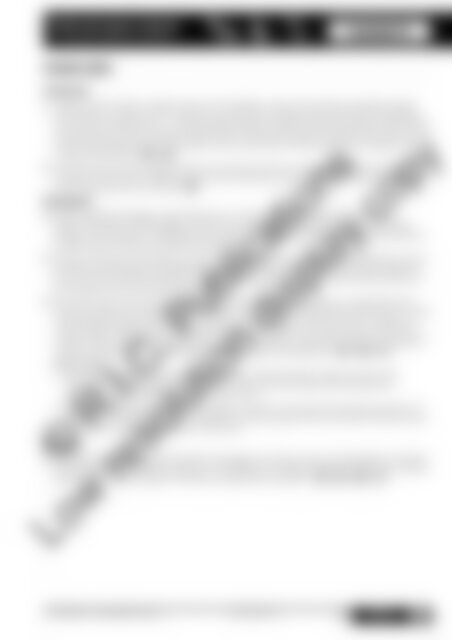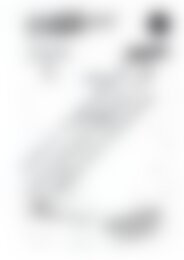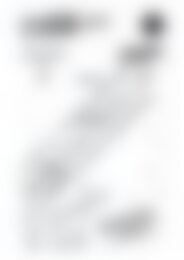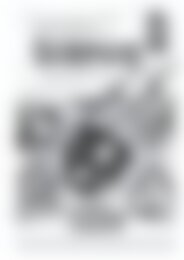6172RB Science a STEM approach Year 2 low res watermark
Create successful ePaper yourself
Turn your PDF publications into a flip-book with our unique Google optimized e-Paper software.
Earth and space sciences<br />
OUR RESOURCEFUL WORLD<br />
Lesson 6<br />
Lesson plan<br />
Introduction:<br />
1. View the online video at to hear a story about a greedy king that<br />
discovered he could use Earth’s <strong>res</strong>ources to build all the things his heart desired and to develop<br />
his land into a beautiful city … until his kingdom began to suffer. Discuss the questions, Why did the<br />
king use Earth’s <strong>res</strong>ources? What problems were caused by the king using Earth’s <strong>res</strong>ources the way<br />
he did? How did the king try to be kinder to the environment? and Do you think the kingdom will<br />
change for the better? QP PC<br />
2. Using a think-pair-share, students discuss how the story from the video reflects real life. What do we<br />
use Earth’s <strong>res</strong>ources for? What problems do we face by the overuse of Earth’s <strong>res</strong>ources? How can<br />
we be kinder to the environment? QP<br />
Development:<br />
3. Watch the Behind the News video, Recycling, at . This video<br />
explains Australia’s landfill problem, how we can recycle and the issues with putting the wrong<br />
things in the wrong bins. It highlights how schools can reduce up to 80% of the waste they send to<br />
landfill simply by reducing, reusing and recycling.<br />
4. Display an A3 copy of the ‘Reduce, reuse, recycle’ poster on page 98. Discuss the meaning of each<br />
word and read through the examples of how we can reduce our water use and waste production,<br />
how we can reuse Earth’s <strong>res</strong>ources in a variety of ways and how we can recycle products that can<br />
be remade into new products for sale. PC<br />
5. Divide the class into pairs and give each pair an iPad®, a copy of the poster on page 98 and the<br />
interview questions on page 99. Using an iPad®, students scan the QR codes on the poster to watch<br />
videos about how they can save Earth’s <strong>res</strong>ources. Students then conduct and film an interview<br />
using an iPad® and the interview questions. Both students take turns to ask, answer and film each<br />
question. Note: If time al<strong>low</strong>s, students should be encouraged to upload their interview segment to<br />
a class vlog (video log) or email it to the teacher, a parent or a buddy class. PC PA C<br />
Differentiation<br />
• Less capable students may be grouped together and assisted by an adult to discuss the<br />
information in each video. Students may film each interview directly after watching and<br />
discussing the information p<strong>res</strong>ented in each video.<br />
• More capable students may be encouraged to <strong>res</strong>earch and answer the interview questions on<br />
page 98 or write their own, such as questions about the types and uses of Earth’s <strong>res</strong>ources and<br />
how we can conserve other types of <strong>res</strong>ources.<br />
Reflection:<br />
6. Individually, or as a class, play the waste sorting game at . Students<br />
sort items into either garbage, organics or recyclables. Encourage students to explain their choices<br />
after the game, and what type of materials are generally recyclable. QP PC PA C<br />
© R.I.C. Publications<br />
Low <strong>res</strong>olution display copy<br />
R.I.C. Publications® – www.ricpublications.com.au 978-1-925431-95-7 YEAR <strong>Science</strong>:<br />
2 A <strong>STEM</strong> APPROACH 97


